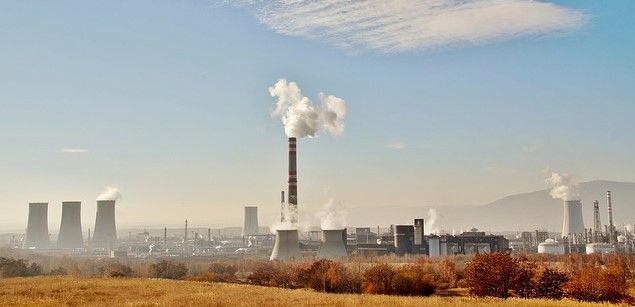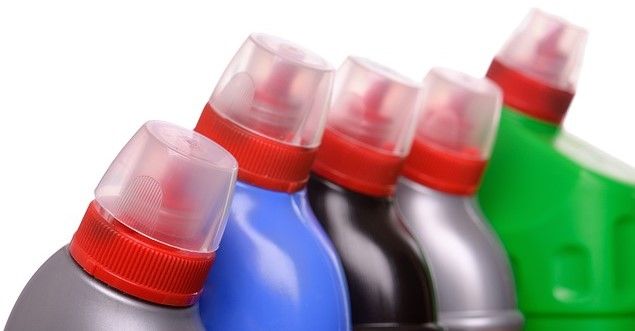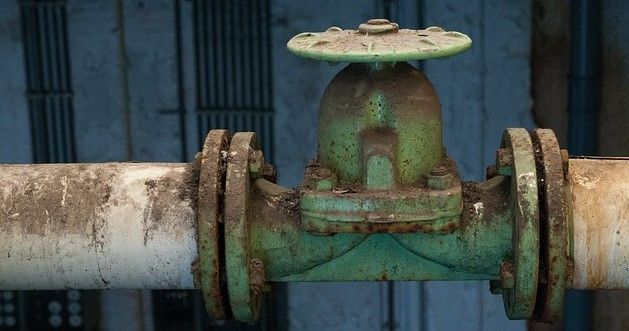2020 was a year like no other. Following 12 years of sustained and steady growth since the 2008 financial crisis the economy had never looked brighter.
But all of this was cut short with the onset of the pandemic. The people that COVID has killed, the limits on social interaction, and the banning of all but the most essential economic activity have devastated the global economy.
Yet with full vaccination on the way, it is expected that life will soon return to normal and with that, the return to sustained and steady economic growth. But how much damage to the economy has been done and how long will it take the chemical industry to recover?

How devastating has the coronavirus pandemic been on the economy?
“The IMF estimates that the global economy shrunk by 4.4% in 2020,” reports the BBC. “The organisation described the decline as the worst since the Great Depression of the 1930s.” Noting that, “The FTSE dropped 14.3% in 2020, its worst performance since 2008 [while] the only major economy to grow in 2020 was China. It registered a growth of 2.3%.”
How badly did the pandemic disrupt the chemical industry?
Data published by the Society of Chemical Industry (SCI) shows that, “Chemical output in the EU27 fell by 5.2% over the period January to June 2020, compared with the same period in 2019.”
While in the US, the American Chemistry Council (ACC) reports that, “Total US chemical production volume excluding pharmaceuticals fell by 3.6 percent in 2020.”
However, that report goes on to note the patchy situation across the industry, stating that, “During 2020, performance among US chemical sectors was mixed. Plastic resins was the only segment to post positive growth, due to its role in COVID-related solutions. Other basic chemical segments declined, especially synthetic rubber – a key ingredient in tire manufacturing. Specialty chemicals saw demand falter across nearly all functional and market segments.”

The way that the pandemic has devastated some sectors of the economy and parts of the chemical industry more than others was also highlighted by Marco Mensink, the Director General at the European chemical council Cefic.
“Like other manufacturing sectors, the EU chemical industry has been severely hit by the current economic downturn during the Covid-19 outbreak,” he stated recently, “At the same time, it is clear that the impact of the crisis varies between the sectors of the chemical industry…”
For example, the petrochemicals sector has remained largely unscathed.
“The COVID-19 lockdowns walloped most sectors of the economy, but demand for petrochemicals, particularly ethylene, held up fairly well,” notes Alexander H. Tullo, a senior editor at the industry journal Chemical & Engineering News (C&EN). “That makes sense. Ethylene goes into a lot of the essentials needed in the crisis, like the polyethylene wrap that packages toilet paper or the ethylene oxide used to make detergents.”
Manufacturers of plastic packaging should expect growth of more than 6% in 2021, says Martha Moore, the ACC’s senior director of policy analysis and economics. This is due to, “… a rebound in end-use market sectors.”

How long will it take chemical markets to recover from the economic lockdown?
While the chemical sector will recover, it may take longer than other sectors such as hospitality and retail. As Melody M. Bomgardner, a specialist in chemical production at C&EN, writes, “the COVID-19 pandemic will likely resemble a V with a flat bottom—really more of a U. Many sectors of the economy, including chemical manufacturing, will spend a bit more time in the trough than expected, thanks to the mandated closings that returned [in the US] in the fall…”
Duane Dickson, Vice Chairman of US Oil, Gas & Chemicals at the industry consultants Deloitte, agrees that things will be tougher than expected for the chemical industry. “I thought we were going to return to prepandemic performance at the end of 2021,” he said, although he now believes that there is only a 50:50 chance of this happening.
The American Chemistry Council stating that to recover fully, the US chemical sector will need to regain the 3.6% fall in output it suffered in 2020, with the data only suggesting, “… a fairly significant rebound in 2021.”
The good news is that economists are forecasting a speedy return to normal for the global economy as a whole, predicting growth of 5.2% in 2021. However, that may be of little solace to chemical companies in the West, as Dickson notes, “That [the economic growth] will be driven primarily by countries such as India and China, forecast to grow by 8.8% and 8.2% respectively. [Whereas] Recovery in big, services-reliant, economies that have been hit hard by the outbreak, such as the UK or Italy, is expected to be slow.”

On the positive side, notes a report in C&EN “… demand for chemicals typically strengthens early in a recovery as manufacturers ramp up production of goods, meaning chemical firms will get a head start on better times. Consequently, the ACC expects chemical output to regain ground, growing 3.9% in 2021.”
In particular, the ACC highlights better growth in sectors that suffered little in 2020. These include, plastics, construction chemicals, and food additives. “In contrast, sales of coatings, synthetic rubber, and fibers will make up only a small fraction of last year’s losses.”

While all predictions on the economy require a certain amount of guesswork, the unprecedented nature of the pandemic has left even experienced analysts in the dark. Will people quickly return to the same spending levels of 2019 or will the economic shock and reduced incomes for large sections of the economy cause hesitancy?
How people react will largely depend on the industry they work in. While some workers have remained economically unaffected, others have suffered badly. Similarly, some sectors of the chemical industry, such as petrochemicals, pharma, and plastics have remained buoyant whilst others, such as those supplying the automobile and aviation industries have seen demand drop away drastically.
Recovery will happen, but much as it may take the travel industry or car manufacturing time to reach peak output, so too chemical producers should keep their fingers on the pulse of the sectors they are servicing to ensure that they keep in step once the pandemic is finally behind us.
Photo credit: SatyaPrem from Pixabay, Rudy and Peter Skitterians, PatternPictures, ivabalk, ds_30, & Antonio Cansino